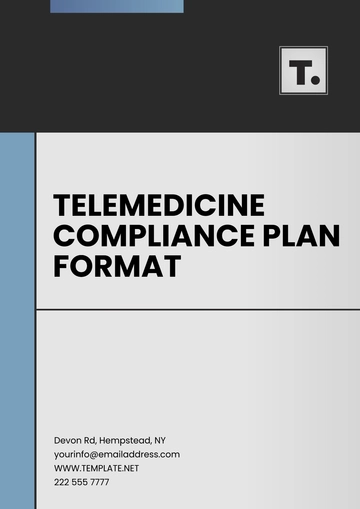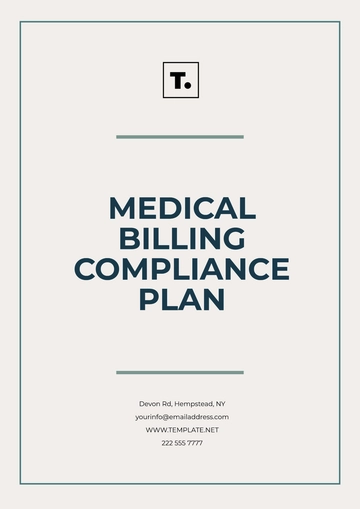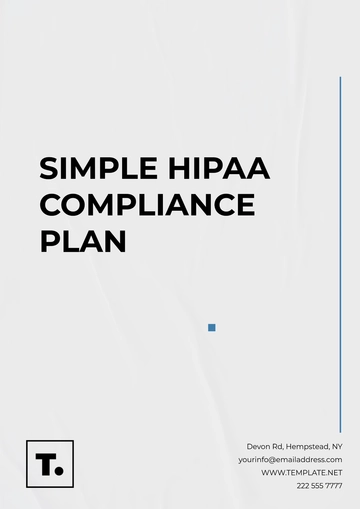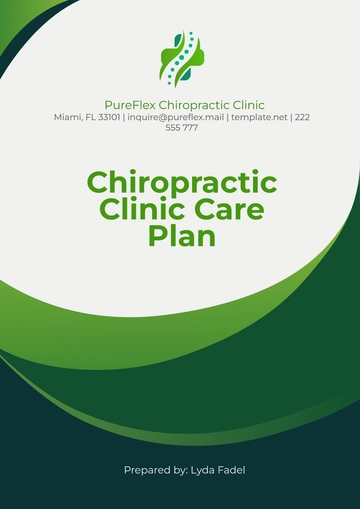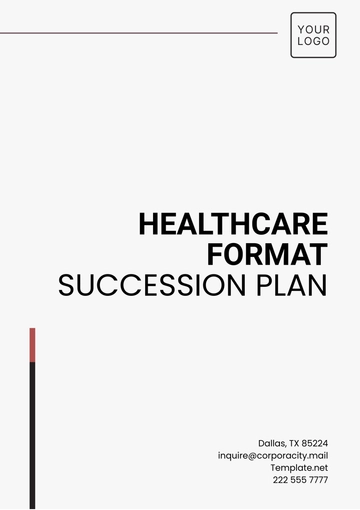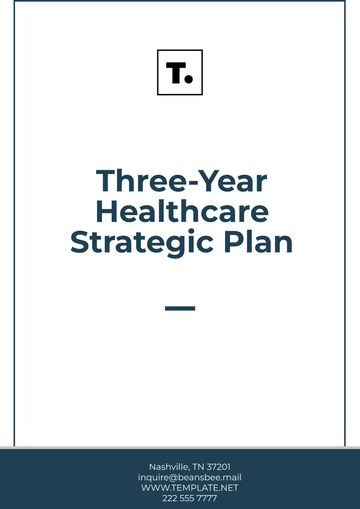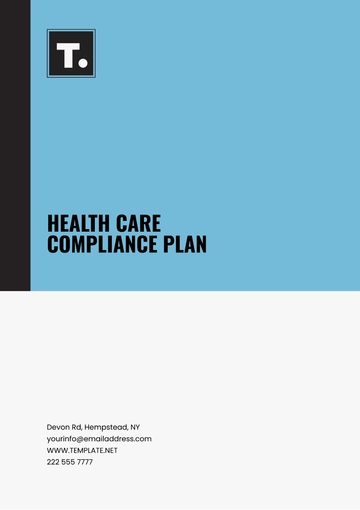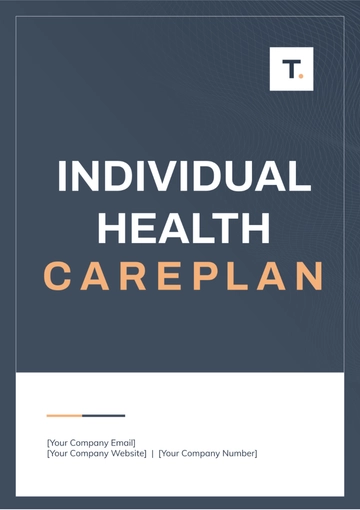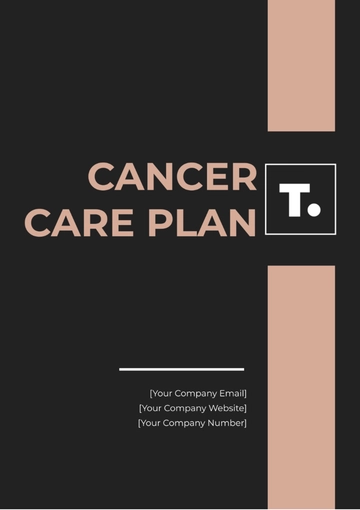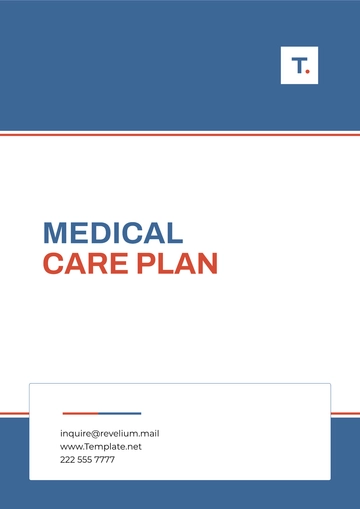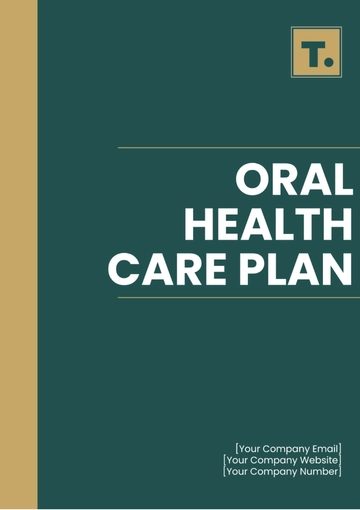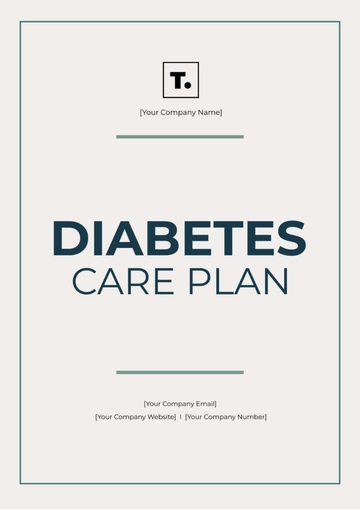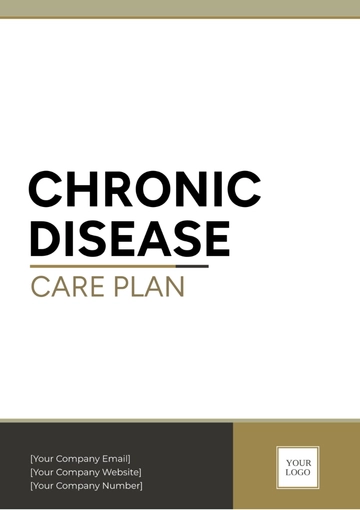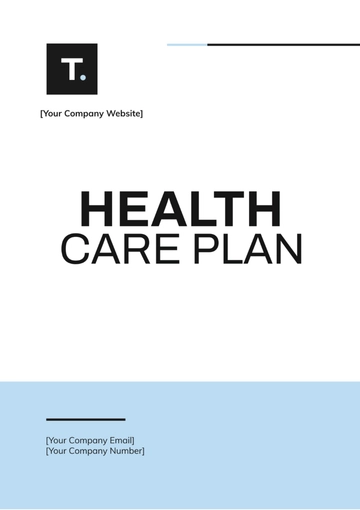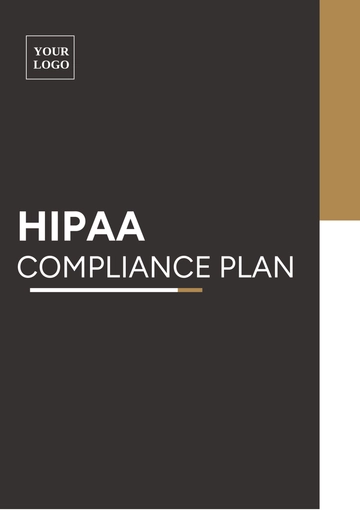Free Healthcare Security Plan
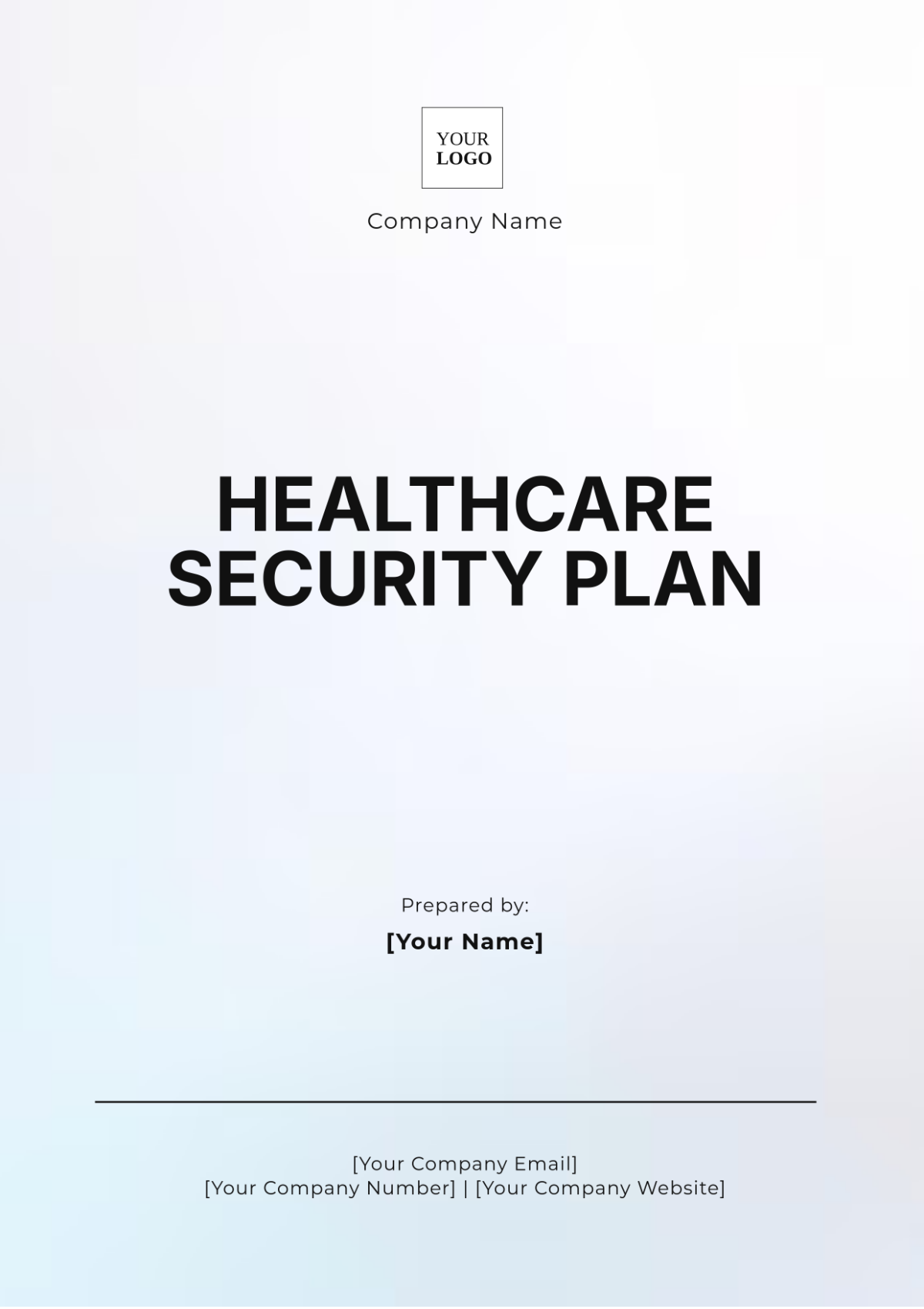
I. Introduction
In the ever-evolving landscape of healthcare, the protection of sensitive patient information is not merely a regulatory requirement but a cornerstone of patient trust and safety. This Healthcare Security Plan serves as a comprehensive framework for safeguarding electronic health records (EHR), medical devices, and healthcare IT systems against potential threats. It aims to ensure that patient data remains confidential, integral, and readily available while fostering a culture of security awareness among all healthcare staff.
II. Security Objectives and Goals
1. Confidentiality
Access Controls: Implement strict access controls to ensure that patient information is only accessible to authorized personnel, using role-based access permissions to limit data exposure.
Data Classification: Classify data based on sensitivity levels to guide handling and access protocols.
2. Integrity
Data Validation: Utilize mechanisms to verify the accuracy and completeness of patient data during entry and transmission.
Change Management: Establish procedures for documenting and approving changes to patient information to prevent unauthorized alterations.
3. Availability
Redundancy Measures: Implement redundancy solutions such as data backups and failover systems to guarantee availability even during outages.
Disaster Recovery Planning: Develop and regularly test a disaster recovery plan to ensure prompt restoration of services after an incident.
III. Risk Assessment
Identifying potential threats to healthcare data is crucial for developing effective defenses.
1. Identify Threats
Cybersecurity Threats: Common threats include ransomware attacks, phishing schemes, and advanced persistent threats (APTs) targeting healthcare organizations.
Physical Threats: risks such as theft of devices containing sensitive data or unauthorized access to physical locations housing patient information.
2. Vulnerability Assessment
Regular Security Testing: Conduct regular penetration testing and vulnerability assessments to identify and address system weaknesses.
Third-Party Risk Management: Evaluate risks associated with third-party vendors who access or manage patient data.
3. Impact Analysis
Operational Impact Assessment: Evaluate how a breach could affect day-to-day operations, including patient care and organizational reputation.
Patient Safety Concerns: Assess potential impacts on patient safety, such as delays in care or incorrect treatment due to compromised data integrity.
IV. Security Controls Implementation
Implementing robust security controls is key to mitigating risks.
1. Administrative Controls
Policy Development: Create comprehensive security policies and procedures tailored to the specific needs of the healthcare organization.
Regular Training Programs: Conduct ongoing training and awareness programs to educate staff about security protocols, emerging threats, and best practices.
2. Technical Controls
Network Security Measures: Utilize firewalls, intrusion detection systems (IDS), and intrusion prevention systems (IPS) to monitor and protect the network from unauthorized access.
Data Protection Technologies: Implement data encryption, tokenization, and secure access protocols to protect sensitive information both at rest and in transit.
3. Physical Controls
Access Control Systems: Deploy access control measures such as key card entry and biometric authentication to secure facilities where sensitive data is stored.
Surveillance and Monitoring: Use video surveillance and monitoring systems to deter unauthorized access and enhance security at physical locations.
V. Incident Response Plan
Preparing for potential security incidents is crucial for minimizing damage.
1. Incident Detection
Real-Time Monitoring: Implement security information and event management (SIEM) systems for real-time monitoring and alerts regarding suspicious activities.
Automated Alerts: Establish automated alert systems to notify the response team of potential security breaches.
2. Response and Containment
Incident Response Team: Form a dedicated incident response team with clearly defined roles and responsibilities for effective management of security incidents.
Containment Strategies: Develop containment and recovery strategies, including isolating affected systems and conducting forensic investigations to assess damage.
3. Post-Incident Review
Root Cause Analysis: analyze incidents to identify root causes and develop action plans to prevent future occurrences.
Report Findings: Document findings and lessons learned, sharing them with stakeholders to enhance overall security awareness and practices.
VI. Compliance and Auditing
Ensuring adherence to legal and regulatory standards is essential for maintaining trust.
1. Regulatory Standards
Compliance Framework: Ensure compliance with relevant regulations such as HIPAA (Health Insurance Portability and Accountability Act), GDPR (General Data Protection Regulation), and state-specific privacy laws.
Data Protection Impact Assessments: Conduct regular assessments to evaluate the impact of new projects or technologies on data protection.
2. Audit and Monitoring
Regular Audits: Perform regular audits of security policies and practices to evaluate compliance and identify areas for improvement.
Continuous Monitoring: Establish continuous monitoring mechanisms to track compliance with security controls and detect anomalies.
VII. Continuous Improvement
Security in healthcare is a dynamic process that requires constant adaptation.
1. Feedback Mechanisms
Surveys and Assessments: Implement regular feedback surveys and assessments to gather input from staff on security practices and perceived vulnerabilities.
Stakeholder Engagement: Engage with stakeholders, including patients and regulatory bodies, to gather insights and improve security measures.
2. Adaptation and Training
Regular Updates: Continuously update training programs and security measures based on new threats, technologies, and regulatory requirements.
Professional Development: Encourage professional development opportunities for security personnel to stay abreast of the latest trends and best practices in healthcare security.
- 100% Customizable, free editor
- Access 1 Million+ Templates, photo’s & graphics
- Download or share as a template
- Click and replace photos, graphics, text, backgrounds
- Resize, crop, AI write & more
- Access advanced editor
Ensure the safety of your healthcare facility with the Healthcare Security Plan Template offered by Template.net. This customizable, downloadable, and printable template provides a comprehensive structure to address security needs in healthcare settings. It is also editable in our AI Editor Tool, allowing you to tailor the plan effortlessly to meet specific requirements. Streamline your security planning process today!
You may also like
- Finance Plan
- Construction Plan
- Sales Plan
- Development Plan
- Career Plan
- Budget Plan
- HR Plan
- Education Plan
- Transition Plan
- Work Plan
- Training Plan
- Communication Plan
- Operation Plan
- Health And Safety Plan
- Strategy Plan
- Professional Development Plan
- Advertising Plan
- Risk Management Plan
- Restaurant Plan
- School Plan
- Nursing Home Patient Care Plan
- Nursing Care Plan
- Plan Event
- Startup Plan
- Social Media Plan
- Staffing Plan
- Annual Plan
- Content Plan
- Payment Plan
- Implementation Plan
- Hotel Plan
- Workout Plan
- Accounting Plan
- Campaign Plan
- Essay Plan
- 30 60 90 Day Plan
- Research Plan
- Recruitment Plan
- 90 Day Plan
- Quarterly Plan
- Emergency Plan
- 5 Year Plan
- Gym Plan
- Personal Plan
- IT and Software Plan
- Treatment Plan
- Real Estate Plan
- Law Firm Plan
- Healthcare Plan
- Improvement Plan
- Media Plan
- 5 Year Business Plan
- Learning Plan
- Marketing Campaign Plan
- Travel Agency Plan
- Cleaning Services Plan
- Interior Design Plan
- Performance Plan
- PR Plan
- Birth Plan
- Life Plan
- SEO Plan
- Disaster Recovery Plan
- Continuity Plan
- Launch Plan
- Legal Plan
- Behavior Plan
- Performance Improvement Plan
- Salon Plan
- Security Plan
- Security Management Plan
- Employee Development Plan
- Quality Plan
- Service Improvement Plan
- Growth Plan
- Incident Response Plan
- Basketball Plan
- Emergency Action Plan
- Product Launch Plan
- Spa Plan
- Employee Training Plan
- Data Analysis Plan
- Employee Action Plan
- Territory Plan
- Audit Plan
- Classroom Plan
- Activity Plan
- Parenting Plan
- Care Plan
- Project Execution Plan
- Exercise Plan
- Internship Plan
- Software Development Plan
- Continuous Improvement Plan
- Leave Plan
- 90 Day Sales Plan
- Advertising Agency Plan
- Employee Transition Plan
- Smart Action Plan
- Workplace Safety Plan
- Behavior Change Plan
- Contingency Plan
- Continuity of Operations Plan
- Health Plan
- Quality Control Plan
- Self Plan
- Sports Development Plan
- Change Management Plan
- Ecommerce Plan
- Personal Financial Plan
- Process Improvement Plan
- 30-60-90 Day Sales Plan
- Crisis Management Plan
- Engagement Plan
- Execution Plan
- Pandemic Plan
- Quality Assurance Plan
- Service Continuity Plan
- Agile Project Plan
- Fundraising Plan
- Job Transition Plan
- Asset Maintenance Plan
- Maintenance Plan
- Software Test Plan
- Staff Training and Development Plan
- 3 Year Plan
- Brand Activation Plan
- Release Plan
- Resource Plan
- Risk Mitigation Plan
- Teacher Plan
- 30 60 90 Day Plan for New Manager
- Food Safety Plan
- Food Truck Plan
- Hiring Plan
- Quality Management Plan
- Wellness Plan
- Behavior Intervention Plan
- Bonus Plan
- Investment Plan
- Maternity Leave Plan
- Pandemic Response Plan
- Succession Planning
- Coaching Plan
- Configuration Management Plan
- Remote Work Plan
- Self Care Plan
- Teaching Plan
- 100-Day Plan
- HACCP Plan
- Student Plan
- Sustainability Plan
- 30 60 90 Day Plan for Interview
- Access Plan
- Site Specific Safety Plan
